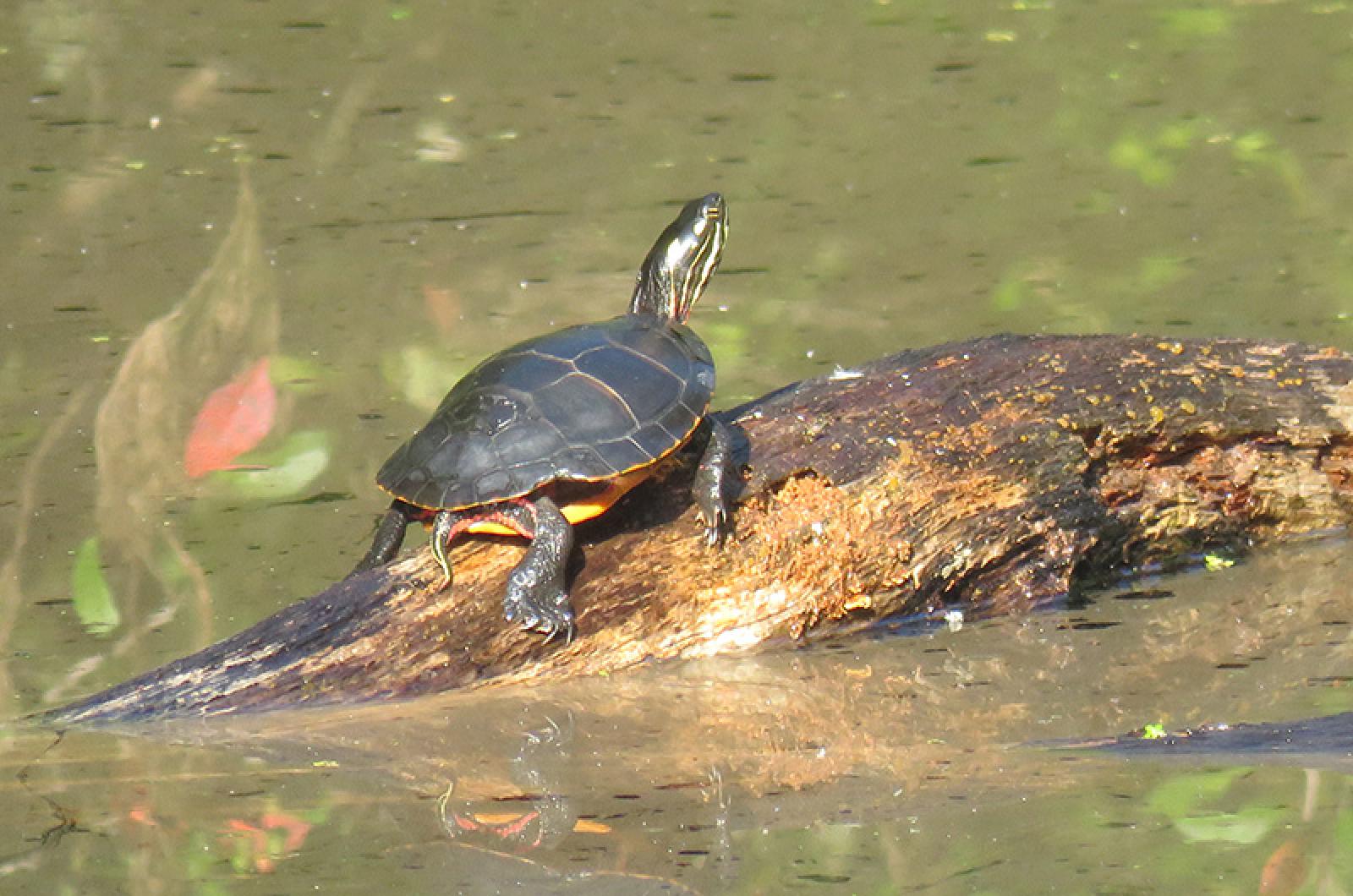“Sun, sun, sun, here we come,” might be the adapted Beatles song if sung by a bale, turn, or flotilla (all names for a group) of painted turtles.
In local ponds, these reptiles gather and spend the season sunning themselves atop rocks, logs and branches that extend into the water. And gather they do, in groups of up to 50 animals.
These bunches of bathing beauties aren’t just showing off their bulbous bikini bods. (Fellow fans of alliteration can add that sentence to their collection.) Sunning is a necessity to their health and wellbeing.
As cold-blooded animals, or ectotherms, painted turtles can’t regulate their body temperature — so basking will warm them up. Turtles must also dry after spending time in the water, where they feed, and drying out allows the fungi that grow on their shells to desiccate and die. Another imperative (if you’re a turtle) is to lose the leeches that attach to a turtle’s shell. Nobody wants leeches and the sun and dryness encourage the hangers-on to fall off the shell and back into the water.
And don’t we all need that ever-energizing vitamin D? The sun helps turtles (and us) retain calcium for strong bones and shells.
But it won’t help their teeth because painted turtles don’t have any. These omnivorous animals chow on plants and animals, crushing and consuming them with sharp, serrated ridges on horny plates on their jaw that allows them to pulverize their food. Painted turtles must always eat when they are in the water, as their tongues don’t move freely so water is needed to swish the food around as it is crushed.
Painted turtles are the most widespread and common turtle in North America and there are four subspecies across the country. In our ponds and wetlands, you’ll find the eastern painted turtle, chrysemys picta picta. The genus name translates into “golden turtles,” describing the yellow stripes on the head of this iconic animal, while picta means painted, alluding to the red, yellow and orange edges of the turtle’s shell.
That shell is a strong protector of the soft body inside. There are 13 bony plates, or scutes, that make up the shell. These scutes grow from the bottom, allowing the animal to grow. Sometimes the top layer is shed. Counting the rings on the scutes is how to age this animal, which can live up to 50 years.
The turtle’s ribs are fused to the shell, leading to some interesting breathing methodology since it cannot expand its chest to breathe as we would. Turtle respiration is accomplished by contracting its flank and shoulder muscles to force air into the lungs.
Large turtles are usually females while the smaller ones are males. Males also have extended, Freddy Kruger-like sharp claws. The gender of a turtle is determined by the temperature in its nest. Eggs in nests with temperatures warmer than 84 degrees Fahrenheit will produce females and colder nests produce males. Higher temperatures caused by climate change may have a very significant effect on these turtles, reducing the number of males of the species.
So stay cool little turtles, or else it might be a mate-less half-century existence — or just another girls night out to paint the town red.
Suzan Bellincampi is islands director for Felix Neck Wildlife Sanctuary in Edgartown and the Nantucket Wildlife Sanctuaries. She is also the author of Martha’s Vineyard: A Field Guide to Island Nature and The Nature of Martha’s Vineyard.







Comments
Comment policy »